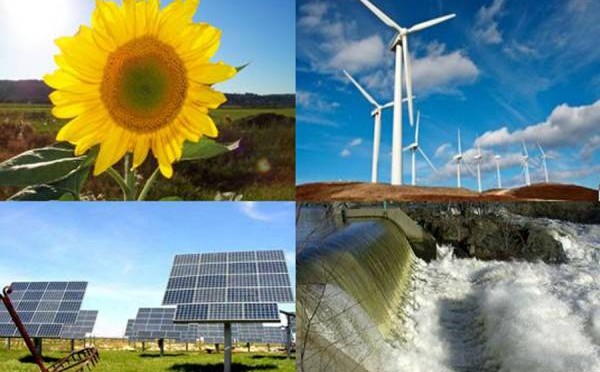The world will need to invest US$1.5 trillion per year until the end of the decade to meet the target of tripling global installed renewable energy capacity by 2030, as agreed upon at the COP28 summit, and solar PV is the only clean energy technology currently on track to receive the level of investment necessary to hit this goal.
These are the headline takeaways from ‘Delivering on the UAE Consensus’, the first in a series of annual reports published by the International Renewable Energy Agency (IRENA), the Global Renewables Alliance (GRA), COP28, COP29 and COP30 host Brazil. The report finds that the world added 473GW of new renewable power capacity in 2023, of which solar accounted for 346.9GW.
These figures are slightly less optimistic than similar numbers published by Ember Climate last month, which assessed the world’s 2023 solar capacity additions to be 459.5GW. Both organisations, however, note that solar dominates the world’s clean energy capacity additions, with IRENA noting that, in 2023, the world added just 114.5GW of new wind capacity, the second-most among technologies, behind solar.
https://flo.uri.sh/visualisation/19795255/embed#?secret=vZPyH3jW2h
The graph above compares the IRENA’s forecasts for the next six years to similar predictions made by the International Energy Agency (IEA) last week. The graph demonstrates that, while IRENA’s overall forecasts are more optimistic—expecting the world to have installed 11,174GW of renewable power generation capacity by 2030, compared to less than 10,000GW in the IEA forecast—the IRENA forecast suggests that solar power will make up a smaller portion of this energy mix.
However, the IRENA report also notes that solar PV is the only technology currently on pace to reach the level of annual capacity additions required to meet its contribution to the 2030 tripling goals. While IRENA figures suggest that the world’s solar sector will need to add an average of 578GW of capacity each year to 2030, the fact that its year-on-year capacity additions increased by 73% between 2022 and 2023 means that, unlike any other power generation technology, solar is on pace to have strong enough annual growth figures to meet the 2030 targets.
Meanwhile, the IRENA report notes that compared to the capacity added in 2023, the onshore wind sector will need to triple its annual capacity additions, while offshore wind will need to increase its capacity additions by six times and geothermal power will need to increase its capacity additions 35-fold.
Greater investment needed
The IRENA report notes that significantly more investment will be needed in the clean energy space to meet the 2030 targets. The world invested a record high US$570 billion in renewable energy in 2023, but this is just over one-third of the US$1.5 trillion annual investment target set by IRENA to meet the 2030 goals.
According to the IRENA forecast, the world will need a massive US$31.5 trillion in cumulative investment in renewable energy generation and adjacent technologies—including grids, flexibility and efficiency—to meet the end-of-decade targets.
Again, the IEA has published figures recently that are a little more encouraging for the solar sector, with the agency expecting annual investment in solar alone to surpass US$500 billion this year, surpassing investment in all other technologies combined. This would be well above IRENA’s target of annual investments for the solar sector of US$397 billion, and would push total renewable power investments for 2024 to around US$900 billion, making significant headway towards the IRENA’s annual targets.
https://flo.uri.sh/visualisation/19795387/embed#?secret=TIbNDGEdVM
The graph above demonstrates how solar PV is the only technology, including grids, to have received investment in 2023 anywhere close to the average annual investment forecast by IRENA to 2030. Over the next six years, investment in grids will need to almost double, while investment in onshore wind will almost need to quadruple.
The IRENA report calls on leaders to make financing available “at better terms”, particularly for less wealthy countries, by making financing programmes available for regions without the capacity for significant private investment into the renewable power space.
This echoes a call made by GOGLA, the global association for the off-grid solar energy industry, last week, which found that, in the off-grid solar sector in particular, close to two-thirds of investment in 2023 came from non-local currencies, suggesting that less wealthy countries, and those that could benefit from off-grid solar installations, are less able to finance projects within their own borders.
The need to improve grids ‘urgently’
The IRENA report also calls for the world’s grids to be expanded “urgently” to create capacity for the swathes of new renewable power capacity set to come online in the coming years.
According to the report, the world will need to invest an annual average of US$717 billion between 2024 and 2030, and 85% of the investment into renewable power reliability will need to go to towards grids, with the remaining 15% to go towards battery storage systems. This will require a complete reversal from historical figures, with investment in the global grids sector increasing 1% year-on-year between 2016 and 2023, whereas the battery sector has seen year-on-year investment double for two years in a row, from 2021-22 and from 2022-23.
This conclusion supports the takeaways from a report from DNV, which found that global grid capacity will need to increase by 2.5 times by 2050. Earlier this year, the US Department of Energy (DOE) announced plans to invest US$2.2 billion into grid infrastructure to help tackle the much-publicised struggles with its transmission system.
“This report serves as a progress tracker and offers recommendations for the years ahead,” said H.E. Mukhtar Babayev, COP29 president-designate, and H.E. Parviz Shahbazov, minister of energy of Azerbaijan, which is hosting this year’s COP29 summit in November.
“The report also underscores the challenges and bottlenecks we have yet to overcome. Investments in clean energy infrastructure and energy-efficient technologies must be scaled up significantly, and policies must be further refined and implemented with greater urgency.”


